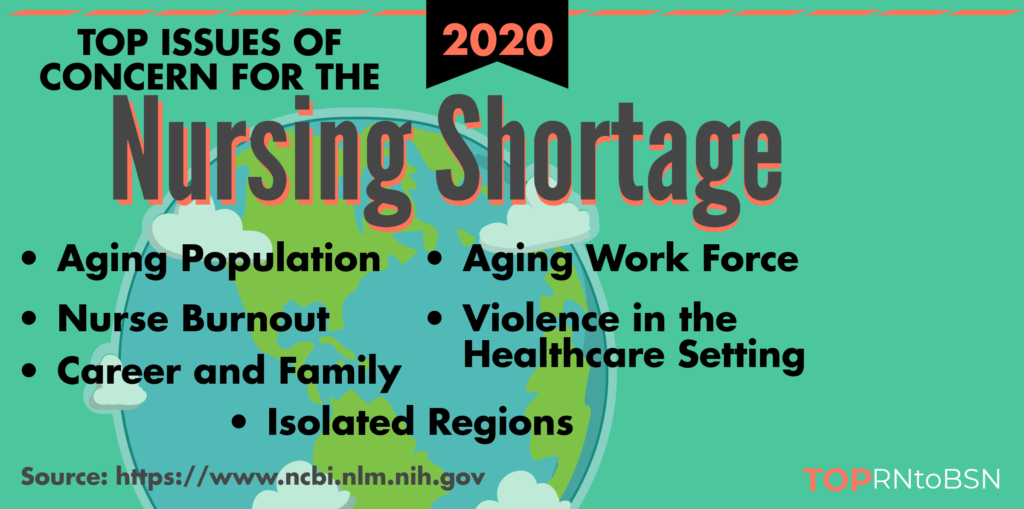
Nurse Burnout
Nurse burnout prevention is very important due to the added stress from the nationwide shortage of nurses and resulting staffing challenges. The most insidious danger to the healthcare system today is nurse burnout. Healthcare professionals and industry pundits agree that staffing shortages in healthcare reduce the quality of patient care because inadequate staffing negatively impacts the quality and safety of each patient.
However, it remains quite challenging for nursing policymakers to implement programs designed to address safe staffing ratios, nurse staffing, and quality of patient care. The problem is so prevalent that any nursing education programs actually incorporate courses in stress management and work-life balance into their curriculum,
What is Nurse Burnout?
Burnout, in general, manifests as depression, lethargy, and pervasive cynicism. In other words, burnout appears as a mountain of mental, emotional, and physical signs, and it starts a domino effect that affects the whole healthcare system.
Nursing burnout, also called compassion fatigue, results in unhappy, disengaged,,, and also frustrated nurses. And while it is apparent how this would negatively impact the nurse personally, the truth is it also influences the quality of care received by a nurse’s patients. It also disrupts a cohesive nursing staff by creating a stressful healthcare setting. Nurses experiencing nurse burnout tend to make medication dosing and clerical errors.
Top Nursing Shortage Issues of Concern

Nursing Stress Management
Nurse burnout statistics calculated by industry watchdogs and also government agencies reveal that nursing burnout impacts the industry. Additionally, these nurses’ burnout statistics and data highlight the causes of nurse burnout:
- The nature of the work– nursing professionals often work in fast-paced healthcare environments with an ever-changing patient load, with many supervisors/bosses.
- The Responsibility– patients’ lives are often placed in the hands of a nurse profession. Even nurses in the highest-paying positions encounter burnout.
- The Shifting Healthcare Paradigm– the changing face of the healthcare law is challenging to keep up with. Additionally, nurses are asked to improve efficiency despite the fact patients are sent home much sooner than in the past.
- Shift work– shift work is notoriously difficult as it requires nurses to rotate shifts often. This leads to lost sleep, stress, and scheduling nightmares.
Burnout in Nursing Statistics
Recently, the healthcare consulting company PRC, Inc. (Professional Research Consultants, Inc.) revealed the results of its nurses’ burnout statistics study. In summary, PRC announced the following stats.
- 15% of nurses experiencing burnout
- 41% of unengaged nurses
- 50% of nurses who are unengaged do not have plans to make a career change
- 20% of emergency room nurses experience burnout
The fact that more than half of the disengaged nurses plan to remain in their current job puts management on notice that the solution to nursing burnout is to offer workplace solutions. As a result, many healthcare facilities implement nursing stress management plans to help nurses experience the effects of nurse burnout.
The Effects of Stress on Nurses
As noted above, nurse burnout is often felt as body aches, headaches, and also general malaise. From an emotional perspective, a nurse burning out will feel like the flu.
- Lack of motivation and disinterest
- Misunderstood
- Overworked
- Underappreciated
- Undervalued
Hospitals dealing with nursing shortages have learned the hard way that a nursing shortage and patient safety directly correlate. This is because nursing shortages create:
- Nursing Errors
- Higher Patient Readmission Rates
- Increase in Preventable Issues like Infections, Bedsores, and also patient accidents
For many years, nurses advocated for staffing to minimum patient requirements, cross-currents up against the many governments, legal, and medical cross-currents that impact staffing ratio requirements. Often these pertinent industries remain at odds and unable to make a final decision.
Nursing Shortage and Patient Safety
Safe nurse staffing ratios can only be applied if accounting for the fact that these ratio requirements are not implemented in a vacuum. To meet the needs of the nursing staff, the hospital’s patients, and cross-currents a nurse-to-patient ratio plan must include the many cross-currents that operate in a nursing/medical setting.
Numerous studies focusing on nurse staffing ratios and patient outcomes have been done during the past 100 years or so. The data from these nurse-to-patient ratio articles suggest the following nursing shortage causes and solutions. The nursing shortage causes:
- Longer Shift Hours
- Demanding fast-paced work
- Excessive Responsibilities
- Stress
- Understaffed nursing staff members
- Poor Job Satisfaction
- Nurse Burnout
- Nursing Shortage Patient Care Results
- More patient falls
- Increased chance of infection
- Longer wait times for nurses to answer a patient call
- Medication dosing mistakes
- Increased chance of death
Who Does the Nursing Shortage Put at Most Risk?
A nursing shortage generally impacts the number of qualified professionals in nursing in underserved communities. The effects of nursing shortage are felt the most in low-income, urban neighborhoods or, in the elderly population. The correlation between the aging population and the nursing shortage was discovered decades ago.
In response to the adverse effects of the nursing shortage, the medical/nursing community, the local and federal governments, and the nursing education community have joined forces to learn how to improve healthcare in rural areas.
There are numerous scientifically-backed studies that show the very real impacts an inadequate nursing supply has on these nursing shortage areas. The ultimate goal of this coalition of change was to begin recruiting healthcare professionals to rural areas and for the senior population.
Issues Regarding Mandated Staffing Ratios
One of the ways hospitals are combatting the effects of the nursing shortage is with minimum staffing ratios. However, those that advocate for implementing a countrywide regulation regarding patient-staff minimum staffing ratios recognize there are obstacles to overcome in designing that optimize patient care and nursing staff satisfaction. One of the significant issues created by staffing requirements is that it fosters:
- A rigid environment in a healthcare setting generally requires flexibility and ingenuity to operate appropriately.
- The healthcare myth that a nurse is a nurse is wrong. It is simply unrealistic to overlook differing nurse skill levels.
Staffing requirements also generally divert funding from other areas like technology and facility management.
On the flip side, these revised nurse-patient ratios show a minimum impact on the medical facility’s bottom line. Thus, increasing nursing staff levels are a contributing factor toward better patient care.
Achieving an optimal nurse staffing level requires adherence to official rules but cannot overlook the need for flexibility. The challenging part of solving the nursing shortage is to find a way to address the problem with a flexible solution that includes the following factors –
- The intensity of a patient’s condition, and also corresponding needs
- The medical unit’s layout
- The number of discharges, transfers, and admissions during a nursing shift
- The nursing staff’s differing levels of experience
Staffing models can solve the nursing shortage problem by first addressing nurse-to-optimal-patient ratios. In addition, it is key to consider the many critical factors noted above that determine the optimal nursing staff for any particular medical unit or facility.
Nurse Burnout Prevention & Management
The reality is that nurse burnout prevention may not always be possible. However, there are tools, CBD buds, and techniques to mitigate the potential for nurse burnout to occur. There have been reports of nurses, especially male nurses being prone to substance abuse while on duty which could also be disastrous for any health facility.
- Allow all nurses to participate in planning and also nursing care decisions.
- Create work schedules that are more nurse friendly.
- Encourage additional nursing education and also find ways to help pay for a nurse’s education.
- Encourage nurses to have a solid understanding of their limitations.
- Foster mentor programs to prevent nurses from feeling as if they are the only ones responsible.
- Offer inclusive workshops and also gripe sessions.
Related:






